Will come a rough winter. A lot of people will be been sick. And truthfully, when people get sick, a lot of them call the doctor and get antibiotics. Luckily, there are lots of safe and effective natural antibiotic alternatives.
First, let’s look at the some of the reasons why we might not want to use antibiotics, and when they may not even be necessary.
Dangers of Antibiotics
You may or may not need antibiotics for minor infections. Ear infections and sinus infections often resolve on their own in just a few days — no antibiotics required. Overuse and misuse of antibiotics contributes heavily to antibiotic resistant “super bacteria” which can cause serious illness, and which few, if any, current drugs can fight.
We also need to worry about gut flora. Antibiotics, especially those most used by the public, are typically broad spectrum. That means they’re not at all specific about which bacteria they kill. They will kill any bacteria that is in your body, including the good bacteria in your gut. When this bacteria is killed, it reduces your immunity and opens you up to future infections.
It also allows bad bacteria to grow uncontrolled and make you sick long-term, because the good bacteria isn’t there to keep the proper balance and battle it back. Scientists are still studying this issue, and many — even mainstream doctors — recommend that you take a probiotic supplement along with a course of antibiotics to try to minimize this effect. It is uncertain how effective these supplements are at this time.
Antibiotics also come with side effects, which can include:
Stomach upset
Diarrhea
Vomiting
Skin rash
Diaper rash (in children)
There are a number of other side effects, too, depending on the particular antibiotic prescribed.
Natural Antibiotic Alternatives
Given all this data, it is important to understand that antibiotics are not to be taken lightly. They should be used in very careful situations when “waiting it out” or other treatment methods have failed. They should never be used for viral illnesses. Antibiotic use is very serious, and although many people take them because they “just want to feel better,” they are not always warranted, and serious problems can result.
But, this doesn’t mean you have to do nothing when you are feeling poorly. There are many excellent, natural antibiotic alternatives to antibiotics that are safe, that bacteria will not become resistant to, and which have no side effects. These should be your first line of defense; you should call a doctor and consider a prescription only if these remedies fail.
How to Use the Best Natural Antibiotics on the Planet
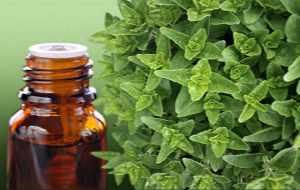 Oregano Oil
Oregano Oil
There are over 40 different oregano species, but the most beneficial one to maximize the therapeutic antibiotic effect you need is the oil produced from wild oregano, called Origanum vulgare. Thymus capitatus, a variety that grows in Spain, is also very powerful.
Quality brands of oregano oil are made from these species. The oil is golden to dark yellow, with a strong spicy odor.
According to Dr. Mercola, the best uses for oregano oil as a natural antibiotic are the following:
- Foot or nail fungus. Put a few teaspoons of oregano oil in a small tub water and soak your feet. The oil can also be diluted (one drop of oil with a teaspoon of olive oil) and then apply directly to nails or skin.
- Parasites and infections: Dilute the oil as described above and place it under your tongue. Hold it there for a few minutes, and then rinse it out. Repeat at least four times a day.
- Sinus infections: Put a few drops of oregano oil in a pot of steaming water or neti pot. Then, slowly inhale the steam.
Cayenne Pepper
Cayenne pepper also called capsicum is a strong spice used for thousands of years for its healing power and antibiotic effects. It’s not just an anecdotal, folklore remedy, however. Science is validating its use as a natural antibiotic as well.
Cayenne pepper is particularly effective at resolving vulvovaginitis, a common infection in women. One Czech study found capsicum essential oil exerts a considerable anti-fungal and antibiotic effect on this condition. It is important to properly use a carrier oil such as olive oil and thoroughly dilute cayenne pepper essential oil, however, as capsicum is quite burning upon initial contact with the skin.
Cayenne pepper is also very effective to use as a home remedy for strep throat.
Colloidal Silver
The remarkable antibiotic nature of silver has been known for centuries. In the early 1900′s, the founder of Searle Pharmaceuticals, Alfred Searle, wrote in his book The Complete Use of Colloids in Health and Disease:
Applying colloidal silver to human subjects has been done in a large number of cases with astonishingly successful results…it has the advantage of being rapidly fatal to microbes without toxic action on its host. It is quite stable. It protects rabbits from ten times the lethal dose of tetanus or diphtheria toxin.
In the 1970′s, Dr. Robert O. Becker at Syracuse Medical University began to intensively research colloidal silver. He discovered that silver not only kills bacteria, but it actually killed bacteria that were resistant to all known antibiotics with no undesirable side effects.
While colloidal silver is highly antibiotic in nature, I suggest only using it for external uses such as gargling, ear infections like swimmers’ ear and skin. The reason is that ingestion of colloidal silver does damage the delicate gut microbiome by killing beneficial bacteria though not as extensively as drug based antibiotics. If you need the assistance of natural antibiotics to consume internally, choose another one on this list, not colloidal silver.
Grapefruit Seed Extract (GSE)
Grapefruit seed extract (GSE) has been reported to be a highly effective, natural antibiotic in combating a variety of common infectious agents. In one study, drops of concentrated grapefruit-seed extract were tested for antibacterial properties against a number of gram-positive and gram-negative organisms. The researchers concluded that GSE was comparable to “proven topical antibacterials. Although the GSE appeared to have a somewhat greater inhibitory effect on gram-positive organisms than on gram-negative organisms, its comparative effectiveness against a wide range of bacterial biotypes is significant.”
Used full strength to combat warts, properly diluted GSE has a variety of uses to combat pathogens in your home environment. The only caveat is that commercial preparations of GSE have a chemical in them called diphenol hydroxybenzene that is of questionable safety and other chemicals like triclosan and cancer causing parabens that are definitely to be avoided.
Therefore, if you intend to use GSE especially internally, it is best to make it yourself by grinding the grapefruit seeds and the juiceless pulp and then mixing with glycerin.
Garlic
Of all the natural antibiotics, garlic is my personal favorite and my family’s go-to for internal use. The reason is that it kills the pathogens, not just bacteria but also fungus and viruses too without harming beneficial gut flora.
- Garlic packs a punch with phytochemicals and healing sulfur components. These sulfur compounds even chelate toxic heavy metals (like lead & cadmium), binding with them for excretion out of the body.
- It has antibacterial, anti-fungal, and even antiviral qualities.
- It promotes the growth of healthy intestinal microflora by acting as a prebiotic (food for probiotics).
- Garlic helps keep fats from oxidizing.
- Garlic acts as a strong antioxidant and guards against DNA damage.
- It protects against radiation & sunlight damage.
- Garlic fights worms and parasites.
- It benefits digestion, which is good for the whole body.
- It contains many nutrients such as vitamins (C, B1, B2, B3), minerals (calcium, folate, iron, magnesium, manganese, phosphorus, potassium, selenium, zinc, and phytochemicals (Allicin, beta-carotene, beta-sitosterol, caffeic acid, chlorogenic acid, diallyl-disulfide, ferulic acid, geraniol, kaempferol, linalool, oleanolic acid, p-coumaric acid, phloroglucinol, phytic acid, quercetin, rutin, s-allyl-cysteine, saponin, sinapic acid, & stigmasterol).
The phytochemical allicin in garlic is so powerful that it is one of the best natural antibiotics effective against MRSA. This article on MRSA natural remedies describes how to use it appropriately for this purpose.
Dr. Natasha Campbell-McBride MD suggests consuming a whole head of garlic a day when using for natural antibiotic purposes. She also outlines how to make garlic infused olive oil as a remedy for ear and other external infections.
- 1 crushed clove of garlic
- 1 – 2 tablespoons cold pressed extra virgin olive oil
Place the crushed garlic in the oil and let sit for 30 minutes, then strain. The oil can be warmed slightly by placing it in a cup and setting the cup in warm water (don’t overheat or this will destroy beneficial properties). Use a few drops of this oil hourly in the ears to treat an ear infection. Garlic oil is a safe remedy for children and can also be used daily (just a couple of drops) to soften ear wax buildup.
If you are concerned about the heat and odor potential on breath and sweat from consuming raw garlic cloves, you can use this pickled garlic recipe to substitute fermented garlic cloves instead. Do not use commercial pickled garlic as it has no therapeutic value.
Ginger
Have you ever wondered why pickled, raw ginger is nearly always served with sushi? This is likely because of historical folklore concerning ginger’s natural antibiotic effects which help prevent food poisoning.
Studies have shown that fresh ginger really does have an antibiotic effect against food borne pathogens such as salmonella, listeria and campylobacter. Fresh ginger also increases stomach acid production and helps calm indigestion when a meal just doesn’t agree with you.
So, if you are going to eat something that has the potential for food borne illness such as sushi or raw oysters, always best to eat some fresh ginger (raw and pickled is most potent) too in order to make use of its natural antibiotic properties.
The Master Tonic, a powerful anti-viral and natural antibiotic, includes plenty of fresh ginger as well as fresh cayenne pepper and garlic. This tonic is a highly effective concoction to make and take with you when traveling overseas in order to have a handy formula available that packs the punch of several natural antibiotics synergistically combined and fermented for maximum potency.
Properly made ginger tea is helpful for digestive ailments such as the inability to absorb food properly and an overabundance of pathogens in the gut. Malabsorption of food can cause nutritional deficiencies that lead to disease over time. “Everything good is found in ginger” declares an ancient Indian proverb.
Olive Leaf Extract
Most people are aware of the health benefits of pure, 100% extra virgin olive oil. However, many in the health community are still in the dark about the antibiotic effects of olive leaf extract coming from the very same trees!
According to Dr. Ronald Hoffman MD, founder and Medical Director of the Hoffman Center in New York City, olive leaf extract as a healing modality was first realized in the 1800’s for malaria. Olive leaf extract may be best known for it’s ability to reduce fever even due to severe illness.
Early in the last century, oleuropein was isolated from olive leaf extract as this phytochemical was thought to give the olive tree its resistance to disease. Researchers from the Netherlands then learned that elenolic acid, a component of oleuropein, acted as a broad spectrum natural antibiotic, which safely and strongly inhibits the growth of not only bacteria, but also viruses and fungi.
Dr. Hoffman MD’s suggestion for use of olive leaf extract for long standing infections or candida is two 500 mg capsules (20% oleuropein) three to four times per day, preferably with meals.
Turmeric
Turmeric is a spice widely used in traditional Indian cooking that has been used holistically for centuries.
Dr. Kelly Brogan MD uses turmeric holistically in her psychiatry practice. She writes,
This wonder-spice is a mainstay of my anti-inflammatory work with patients in my practice where I use liposomal preparations of curcumin, the natural phenols responsible for turmeric’s yellow color, when I suspect their symptoms stem from a challenged immune system.
In research, the curcumin in turmeric was shown to be effective against Helicobacter pylori common in gastroduodenal ulcers regardless of the genetic makeup of the strain. The administration of curcumin also resolved any gastric damage caused by the infection. Turmeric is also highly effective in providing allergy relief from the symptoms of allergic rhinitis or hay fever.
If you wish to use turmeric as a natural antibiotic, Dr. Weil suggests to look for extracts in dosages of 400 to 600 mg, and take three times daily or as directed.
Echinacea
Echinacea is an herb widely used to fight infections and has been the subject of wide scientific research. Even WebMD is positive about it concluding that:
Echinacea is widely used to fight infections, especially the common cold and other upper respiratory infections. Echinacea is also used against many other infections including the flu, urinary tract infections, vaginal yeast infections, genital herpes, bloodstream infections (septicemia), gum disease, tonsillitis, streptococcus infections, syphilis, typhoid, malaria, and diphtheria.
German scientists have studied echinacea using double-blind, placebo-controlled studies, the gold standard for scientific research on drugs. One of these showed that echinacea users experienced less frequent and less severe virus infections by one-third to one-half with no toxic effects compared to the group that took a placebo.
According to Dr. Sears MD, echinacea studies on adults suggest 300 mg three time a day for a total of 900 mg a day as a recommended regimen. For children, half the adult dose for ages 6-13, and one-quarter the adult dose for those under age six.
Manuka Honey
What would this list of natural antibiotics be without raw honey which has been used as an infection fighter since ancient times? Of all the honey on the planet, Manuka honey from New Zealand is the best when it comes to resolving infections. Just be sure it has never been heated (source)!
I first used Manuka honey 16 years ago shortly after my first child was born to resolve a breastfeeding related infection. It worked so well I was able to avoid using antibiotics. I have also used it to very quickly heal strep throat without antibiotics for my tween daughter.
According to Dr. Mercola, clinical trials have found that Manuka honey is effective against more than 250 strains of bacteria, including:
- MRSA (methicillin-resistant Staphylococcus aureus)
- MSSA (methicillin-sensitive Staphylococcus aureus)
- VRE (vancomycin-resistant enterococci)
- Helicobacter Pylori (which can cause stomach ulcers)
In 2007, the FDA even approved Manuka honey based wound dressings.
The great thing about Manuka honey is that it is food. I’ve personally found it most effective for skin based infections (just slather on as needed), but the research indicates an internal infection fighting benefit as well even reducing the cavity causing bacteria responsible for dental plaque.
Pau d’Arco
Overuse of drug based antibiotics frequently leads to an overgrowth in the gut of a large family of yeasts or fungus known as Candida.
Pau d’arco is an herb that is highly anti-Candida and significantly reduces the resultant sugar cravings that come with it. Repressing Candida and ingesting plenty of probiotics in the form of fermented foods and/or supplements will over time allow beneficial gut microbes to regain control of the gut environment.
While Pau d’arco has been used as a medicine for centuries as one of the best natural antibiotics to counteract fungal overgrowth, science is also validating these anecdotal observations. The Brazilian Journal of Biology found in 2010 found that Tabebuia avellanedae, one tree species that is the source of the Pau d’arco herb, does indeed exert an inhibitory effect on yeasts.
The form Pau d’arco is most often used is as an herbal tea, which I must admit, is an acquired taste! Even after drinking it as needed for the past 2 decades, I still don’t like it much! The good news is that the taste isn’t so terrible that you can’t drink a cup or two for a few days to a week or more. This will help you get back into the routine of healthy eating with sweets kept in moderation if Candida has gotten out of control during off the wagon eating while on vacation or due to a round of antibiotics.
Which of the natural antibiotics on this list are your favorites? What do you use them for and when? Please note that if you absolutely have to use pharmaceuticals due to a very serious infection, repairing the gut after antibiotics is a very important process that should be undertaken immediately.
Old-Time Wisdom” boxes present early gardeners’ best planting notions.
* Tried-and-true recipes from early kitchens will tickle your tastebuds.
* “Strange but True” boxes reveal weird, wacky, and wonderful gardening techniques.
* A source list makes it easy to locate wonderful old-time plants.
* Authentic old-time illustrations take you back to a time when garden tips were on everyone’s lips.
* A “Recommended Reading” list guides you to more great ideas from the past.
Books can be your best pre-collapse investment.
The Lost Ways (Learn the long forgotten secrets that helped our forefathers survive famines,wars,economic crisis and anything else life threw at them)
Survival MD (Best Post Collapse First Aid Survival Guide Ever)
Conquering the coming collapse (Financial advice and preparedness )
Liberty Generator (Build and make your own energy source)
Backyard Liberty (Easy and cheap DIY Aquaponic system to grow your organic and living food bank)
Bullet Proof Home (A Prepper’s Guide in Safeguarding a Home )
Family Self Defense (Best Self Defense Strategies For You And Your Family)
Survive Any Crisis (Best Items To Hoard For A Long Term Crisis)
Survive The End Days (Biggest Cover Up Of Our President)

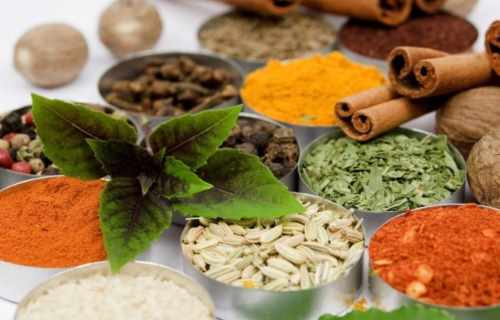
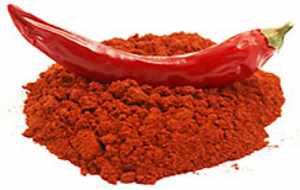
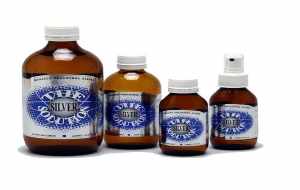
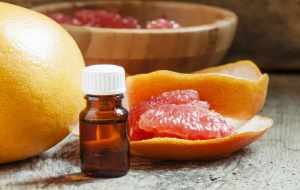





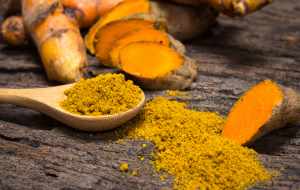

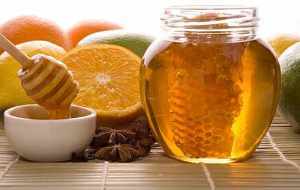



I use turmeric, raw honey, garlic, hot peppers and – more recently – oil of oregano. I also use plants that aren’t listed.
What I use and how depends on what for. If I feel myself coming down with something, I make chicken soup and add about a tsp turmeric, a dumping of black pepper, a handful of crushed chilis or a minced ghost pepper, 3-4 cloves raw garlic and – tonight – 2 drops oregano oil. Usually one serving is enough to stop the flu or whatever it is, dead in it’s tracks. If it’s strep, toast with raw honey, tea with honey and – if it’s affecting my whole body – the above soup recipe.
For illness in my livestock, I add turmeric to their feed; for wounds, even serious ones from predators where internal organs are exposed, I drizzle honey into the open wound and add turmeric to the feed (yes, they heal quickly and live!).
When my knife slips, instead of going for stitches I crush some yarrow leaves and bind my wound with it; yarrow is a coagulant so it immediately quells the gushing flow of blood, it’s also antibiotic, AND it speeds healing faster than stitches, polysporin and bandaids combined!